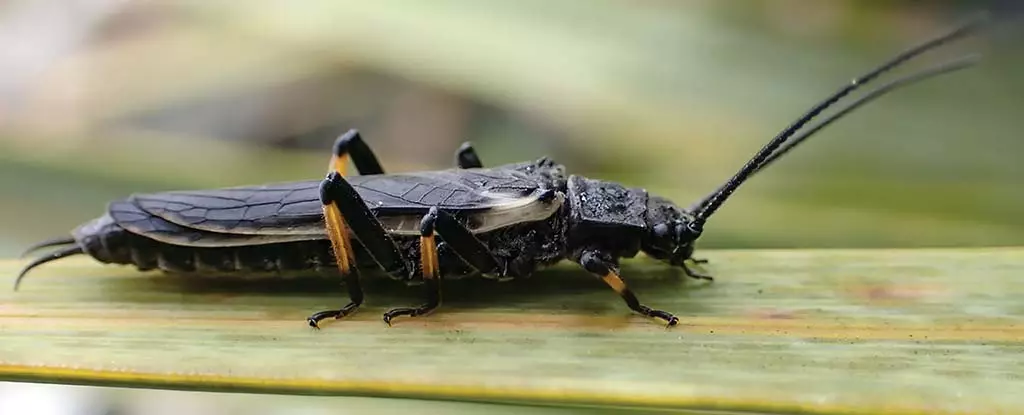The long-tailed stonefly, scientifically known as Zelandoperla, presents a compelling case study in human-induced evolutionary change. Researchers have recently highlighted how this indigenous New Zealand insect has adapted to deforestation by altering its coloration—a transformation driven by a complex interplay of ecological dynamics and anthropogenic effects. The findings not only underlie the resilience of nature but also serve as a stark reminder of how human activities can reshape the mechanisms of evolutionary adaptation.
For many years, Zelandoperla thrived in forested environments where it utilized a fascinating mimicry strategy to evade predation. By resembling the appearance of the toxic stonefly Austroperla, which possesses the ability to produce cyanide as a defense mechanism, Zelandoperla was able to deceive potential predators, especially birds. This adaptive strategy suggests a well-documented ecological principle where non-toxic species evolve to take on the warning signals of their toxic counterparts, thereby enhancing their survival in predator-rich environments.
However, the landscape of southern New Zealand has dramatically changed due to human activities, specifically deforestation, which has largely accelerated since European settlement in the 1800s. The loss of forest habitats has led to a significant decline in the numbers of Austroperla, which relies on lush ecosystems for its sustenance. In regions where the toxic stonefly has vanished, Zelandoperla faces a dilemma: without a model to mimic, its initial survival tactic of camouflage becomes obsolete.
Recent research conducted by scientists from the University of Otago illustrates that in deforested environments, certain populations of Zelandoperla have begun to shed their mimicry traits altogether. Instead of maintaining the dark coloration associated with Austroperla, these insects have adapted to exhibit lighter shades. Field observations and predation experiments revealed that such shifts in coloration were directly linked to changes in predation pressure; in deforested regions, predation rates dropped significantly, and birds were inclined to target lighter-colored stoneflies less frequently. This suggests that the remaining birds in these altered landscapes are no longer deterred by the lack of toxic species, allowing for variations in coloration to thrive, as seen in the darker variants of Zelandoperla.
An intriguing aspect of this evolutionary shift lies in its pace. The rapidity with which these insects altered their color in response to a changing environment speaks volumes about the flexibility of evolutionary processes. The scientists employed a mix of methodologies, including genetic mapping and field experiments, to understand how Zelandoperla’s genetic toolkit allowed for such swift adaptations. The results indicated a three-fold shift away from the original ebony hue in multiple deforested locations. This indicates not just individual change but a broader, predictable evolutionary strategy in response to ecological pressures.
This significant evolutionary response underlines the urgent need for conservation efforts focused on preserving remaining forest habitats. The rapid alterations in Zelandoperla highlight the consequences of habitat loss on biodiversity and the intricate web of life. As ecosystems are disrupted, we may see further instances of species adapting in unforeseen ways, with both positive and negative implications for conservation strategies. Future studies should expand beyond Zelandoperla, examining how other species respond to similar environmental pressures, providing critical data that could better inform conservation efforts.
The long-tailed stonefly serves as both a beacon of hope for adaptive resilience and a cautionary tale regarding human impact on ecosystems. As we continue to witness the consequences of climate change and habitat destruction, understanding how species like Zelandoperla evolve can not only deepen our appreciation for nature’s adaptability but also reinforce the urgent need for protective measures that aim to sustain biodiversity. This case study invites further inquiry into the intricate relationships within ecosystems, fostering a broader understanding of how life persists amidst rapid change.

